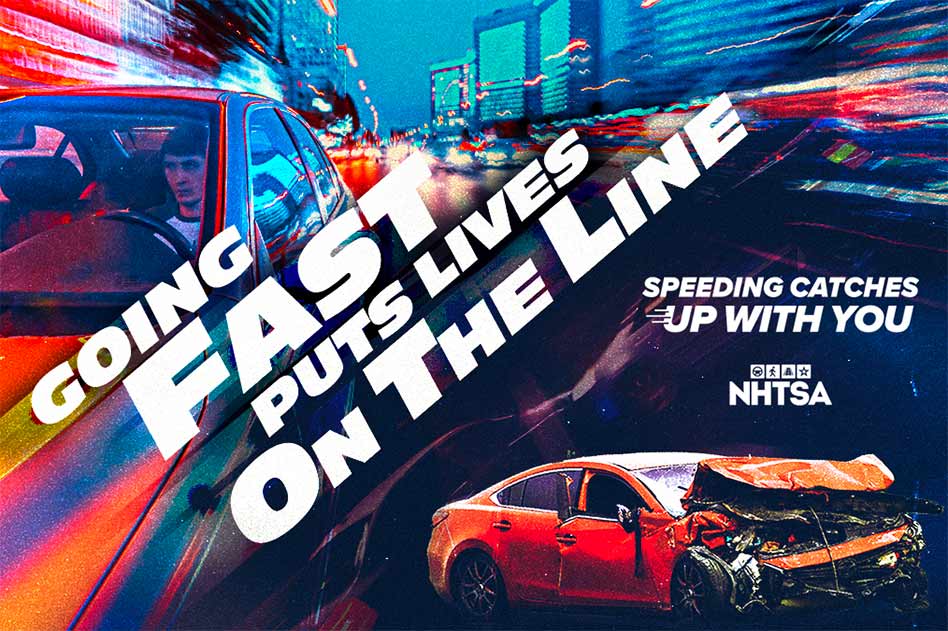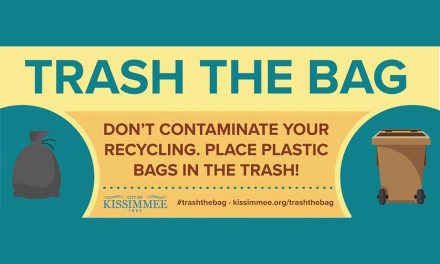The National Highway Traffic Safety Administration is partnering with advocates and experts from across the country to launch its “Speeding Wrecks Lives” speeding prevention campaign. The launch comes as new data show that while there has been three quarters of a slight dip in overall roadway deaths, speeding fatalities reached a 14-year high in 2021 and make up almost one-third of all traffic fatalities.
The campaign, which runs through July 31, is one of many ways in which the U.S. Department of Transportation is working to address the crisis of deaths on our roadways through its National Roadway Safety Strategy. The NHTSA campaign is supported by a $9.6 million national media buy featuring English and Spanish-language ads running on television, radio and digital platforms. The ads target drivers ages 18 to 44, who data show are most likely to be involved in speeding-related fatal crashes.
During a recent press event, NHTSA Acting Administrator Ann Carlson, together with Lorraine Martin, President and CEO of the National Safety Council, and Dr. Will Smith, an emergency department physician at St. John’s Health in Jackson, Wyoming, emphasized the dangers of speeding and the efforts made around the country to prevent crashes. Also lending their voices were Captain Cory Carlisle of the Kansas City, Missouri, Police Department; Captain Christopher Vetter, Commander of the New Hampshire Office of Highway Safety; and Lieutenant Maurice Raines of the Georgia Governor’s Office of Highway Safety, who participated via taped remarks.
“Speeding accounts for nearly one-third of all fatalities on our roads and puts everyone at risk, including people in other vehicles, pedestrians, cyclists, motorcyclists and people with disabilities,” Acting Administrator Carlson said. “NHTSA reminds everyone to slow down and arrive safely – it’s better to arrive a few minutes late than not at all.”
NHTSA released new data on speeding, showing that speeding-related fatalities increased 8% from 2020 to 2021, with 12,330 people killed in 2021 speeding-related crashes. This represents 29% of all traffic fatalities in 2021. The estimated number of people injured in speeding-related crashes also increased by 7%. And 33% of motorcycle riders in fatal crashes were speeding, more than drivers of any other vehicle type.
Many drivers in speeding-related crashes also engaged in other risky driving behaviors. Drivers in fatal crashes who were speeding were also impaired by alcohol more frequently than drivers who were not speeding. Additionally, more than half of speeding passenger vehicle drivers were not wearing a seat belt, as compared to 23% of non-speeding passenger vehicle drivers.
NHTSA also released a study of efforts used by law enforcement officers to reduce speeding. The study found that the number of speeders on the road was a statistically significant predictor of speeding-related crashes, and the number of non-speeders was not, indicating that the number of vehicles on the road can increase without leading to more crashes if the additional vehicles are driving at or below the speed limit. The study also found that decoy (unoccupied) law enforcement vehicles, issuing citations, and digital speed signs can continue to reduce speeding at deployment locations, even after they are no longer at those locations.
In January 2022, the U.S. Department of Transportation released the comprehensive National Roadway Safety Strategy (NRSS), a roadmap to address the national crisis in traffic fatalities and serious injuries. It adopts the safe system approach and builds multiple layers of protection with safer roads, safer people, safer vehicles, safer speeds and better post-crash care.
The NRSS is complemented by unprecedented safety funding included in President Biden’s Bipartisan Infrastructure Law, including the Safe Streets and Roads for All grant program. In February, the Department announced over $800 million in grant awards for more than 500 communities to help carry out projects that can address high-crash areas.
U.S. DOT also launched the next phase of the NRSS, its Call-to-Action campaign, and released a one-year progress report and accompanying data visualizations that highlight the extent and magnitude of the U.S. roadway safety problem.
NHTSA is also working closely with States to use a variety of tools to address their individual speed problems including setting speeds at safe limits and engaging with communities to tailor public education and enforcement efforts. Many States are conducting speed campaigns during the month of July to educate the public and enforce safe speeds to drive down speed-related crashes.
The Department’s other roadway safety actions include:
- Issuing a proposed rulemaking on advanced pedestrian automatic emergency braking (AEB)
- Releasing proposals for upgrades and a “road map” for the New Car Assessment Program – including developing a proposal to add a pedestrian protection program to NCAP
- Issuing a final rule on rear impact guards
- Issuing a Standing General Order to collect more data about crashes that occur when automated driving systems and advanced driver assistance systems are engaged
- Producing the Vulnerable Road User Safety Assessment to guide states on required 2023 assessments
- Establishing a cross-agency working group to issue the Complete Streets Report to Congress, “Moving to a Complete Streets Design Model”
- Advancing a revised Manual on Uniform Traffic Control Devices by analyzing and resolving the more than 25,000 public comments
- Publishing an Advance Supplemental Notice of Proposed Rulemaking concerning speed limiters with a motor-carrier-based approach


















